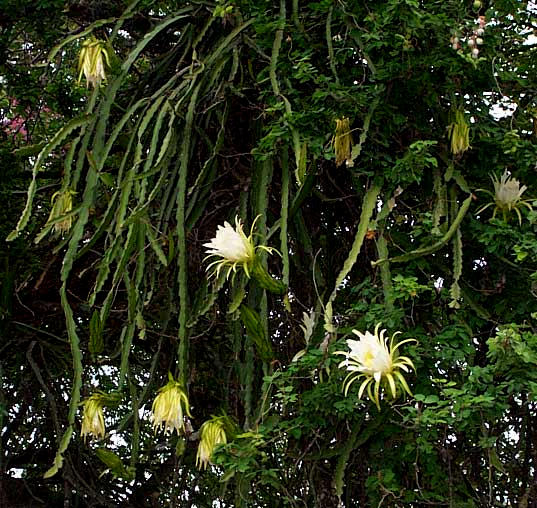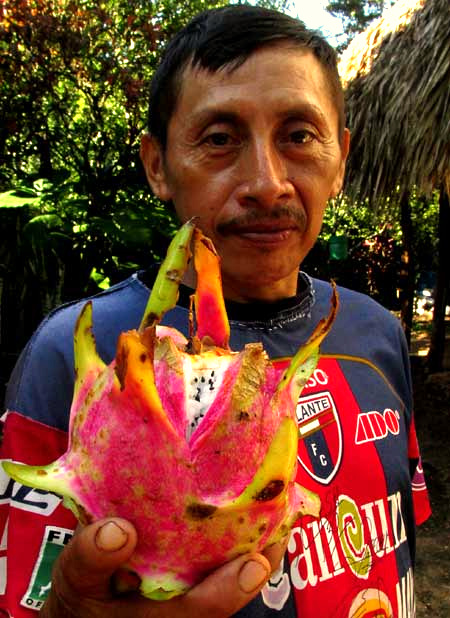Excerpts from Jim Conrad's
Naturalist Newsletter
from the May 12, 2007 Newsletter issued from Sierra Gorda Biosphere Reserve, QUERÉTARO, MÉXICO
"NIGHT-BLOOMING CEREUS" IN FLOWER
You can see the "Night-blooming Cereus" I'm talking about, growing next to a sidewalk in downtown Jalpan, below:

"Night-blooming Cereus" is in quotation marks because several cacti go by that name. Ours is HYLOCEREUS UNDATUS. It's native from Mexico to northern South America, but is naturalized in tropical and subtropical zones worldwide. One reason for the plant's popularity is its foot-long, fragrant, beautiful blossoms -- among the largest in the Cactus Family -- but also it's grown for its edible fruits. You even see the species growing wild in southern Florida, though it's unclear whether those plants are persisting vegetatively, or actually reproducing by seeds.
The large, red, fruits, known as strawberry pears or dragon fruits in English, and pitayas in Spanish, are an important crop in some places. In the Yucatan fruits are produced on trellised plants grown in large plantations. Below you see one of my Maya friends, Juan, holding such a fruit:

If you have a "Night-blooming Cereus" that doesn't look like the Hylocereus undatus in my picture, you might compare your plant with the following species, all with huge, white blossoms, and all known as "Night-blooming Cereuses":
Epiphyllum oxypetalum, Peniocereus greggii, and Selenicereus grandiflorus: